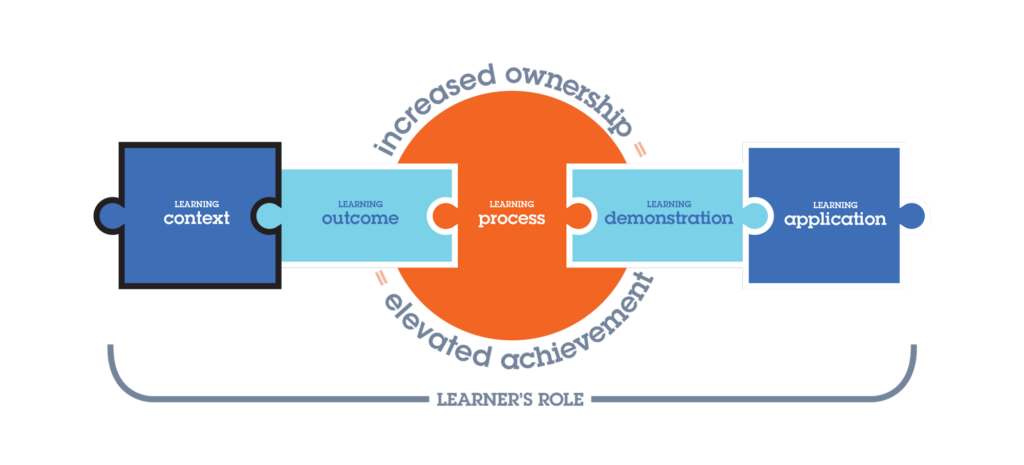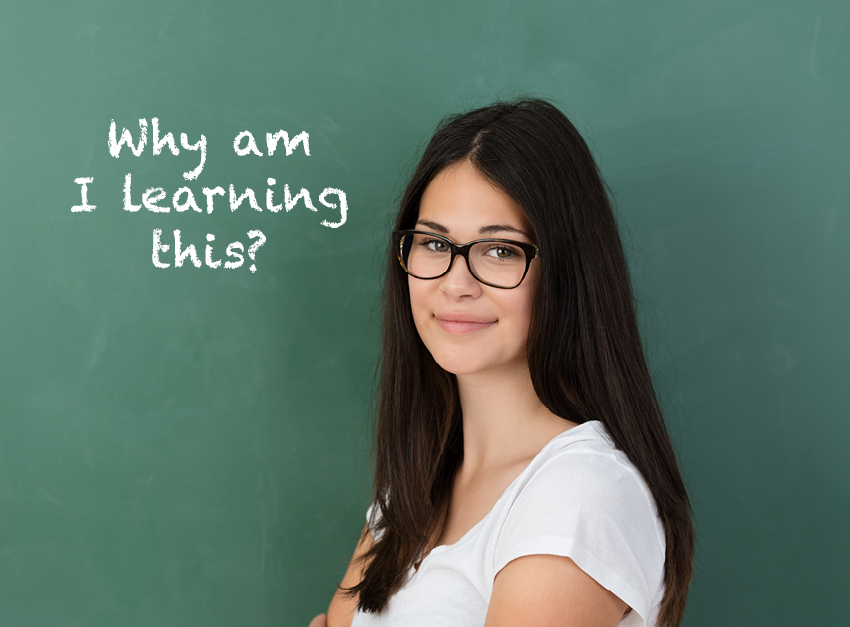Share this article.
Authentic, equitable, and sustainable learning is driven by decisions that empower learnership. In other words, the more students know about their learning, the more opportunity they have to own their learning which leads to increased student achievement. Elevated Achievement’s Learning Model is the tool teachers need to support students in ownership of their learning, thereby developing learnership.
In other articles in this series, we provided an overview of the Learning Model and its five student-centered phases: setting the Learning Context, stating the Learning Outcome, engaging in the Learning Process, producing the Learning Demonstration, and implementing the Learning Application. We also discussed the sequence of “backwards” planning a focused lesson and provided examples.
In this article we will take an in-depth look at one of the five phases that lead to increased ownership and elevated achievement, the Learning Context.
Setting the Learning Context
This is the phase of the lesson during which the lesson is introduced to the students and placed within a context. Context includes informing students about what they will learn, why this learning is important, and how it connects to previous and future learning. Most importantly, this phase helps students begin to answer the question, “Why am I learning this?” The teacher can make connections to real-world applications and to the final prompt or product of the unit.
While setting the Learning Context, the teacher clearly and specifically introduces what students will be learning, why it is important to them, how this learning connects to previous learning, and how they will apply what they have learned in the future. This information will be restated during the Learning Application phase.
The Value to Students
If students know why they are learning a skill they are more able to…
- Understand and articulate where each day’s learning is heading and how it will be applied in the future.
- Connect lessons and understand how each lesson builds upon each other and leads toward an identified future application.
- Understand that learning is a process that occurs over time versus seeing each lesson as an isolated learning opportunity.
The Value to Teachers
Teachers who have a classroom full of students who can articulate why they are learning a skill will have students that…
- Make connections to previous learning and actively build on new learning.
- Take ownership of where they are in the learning process towards an identified future application and can articulate what differentiated or additional supports they may need.
- Are more motivated to learn as they see value and progress from connected lessons towards an authentic application.
In other words, the value to you is to have a classroom of learners who understand their role in the learning and will help you with the task of teaching. Instead of just one person monitoring all of the learning, you will have a roomful of people.
To help you make stronger student-centered decisions, consider these questions as you plan:
- Why are they learning this?
- How will today’s learning connect to previous and subsequent learning?
- What is the student’s role in the Learning Context?
- How will you share this information with your students before, during, and after a lesson?
In turn, students who own their learning can articulate before, during, and after a lesson:
- Why will I learn this?
- Why am I learning this?
- Why did I learn this?
What’s Next in Learnership?
Teachers play a crucial role in ensuring that students own their learning. The teacher is the key decision-maker for establishing effective learning designs before, during, and after instruction in the classroom. Because the teacher is the person who knows the most about the students, it is important that the teacher’s ownership in making these decisions is cultivated.
That’s why we provide you with 5 articles that take in-depth looks at the each of the phases of the Learning Model, their value to students, and their value to teachers. In each article, you will get the planning questions and tools you need to implement focused Learning Models for each and every lesson.
Remember, the decision-making sequence for designing a lesson is “backwards.” Therefore, the following sequence for reading is recommended as you plan with a focused Learning Model.
- First, read this current article to learn how to determine the Learning Context, and then read “How to Ensure Your Students Apply What They Have Learned” to learn how to determine the Learning Application. In other words, read these 2 articles to get the planning questions and tools you need to determine why students are learning a skill right now and how they will use it in the future.
- Next, read “How to Support Your Students to Know What They Are Learning” to learn how to determine the Learning Outcome and, then read “How to Empower Your Students to Demonstrate Their Learning” to learn how to determine the Learning Demonstration. In other words, read these 2 articles to get the planning questions and tools you need to determine the specific skills students are learning and what a demonstration of mastery will look and sound like.
- Finally, read “How to Engage Your Students in the Learning Process” to learn how to determine the Learning Process. In other words, read this article to get the planning questions and tools you need to determine the instructional strategy or strategies that will allow for students to most effectively and efficiently demonstrate mastery of the targeted skill.
Then you’ll be ready to backwards plan a lesson and forward instruct through that lesson with the end in mind as you move through the five student-centered phases: setting the Learning Context, stating the Learning Outcome, engaging in the Learning Process, producing the Learning Demonstration, and implementing the Learning Application.
Continue the Learning
Check out these articles and resources to continue your learning about this topic…
The Learning Brief
In this article you learned…
- The Learning Context is the phase of the lesson when the teacher informs students about what they will learn, why this learning is important, and how it connects to previous and future learning, and this information is restated during the Learning Application
- Students who know why they are learning a skill are more able to connect lessons and understand how each lesson builds upon each other and leads toward an identified future application.
- Teachers who have a classroom full of students who can articulate why they are learning a skill will have students that take ownership of where they are in the learning process towards an identified future application.
Can you imagine building an environment full of motivated, engaged, and eager students who own their learning?
We can.

